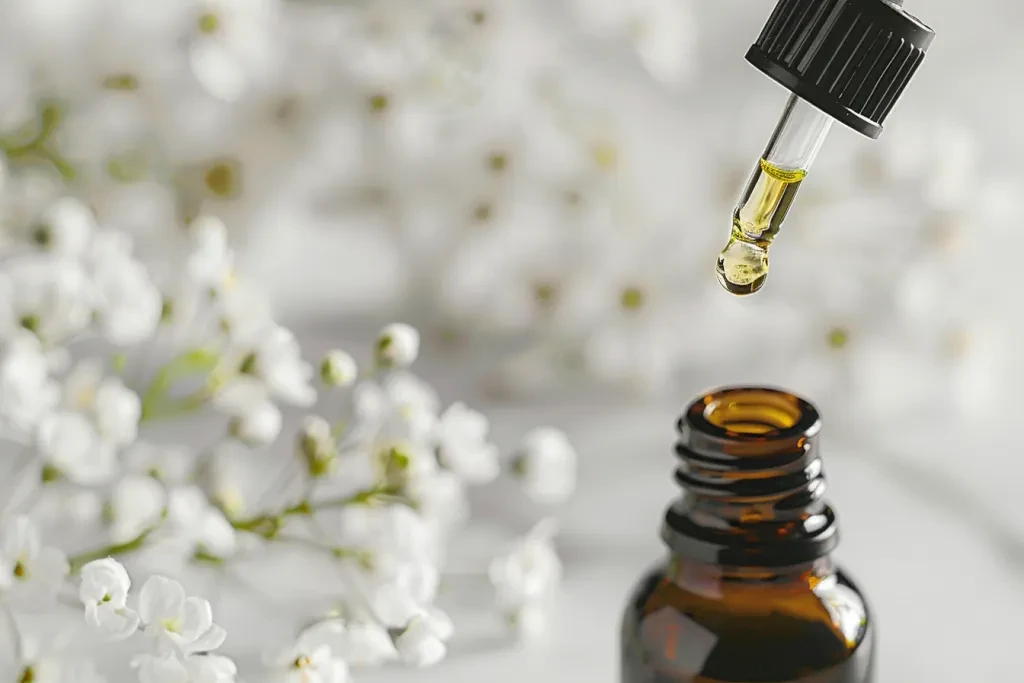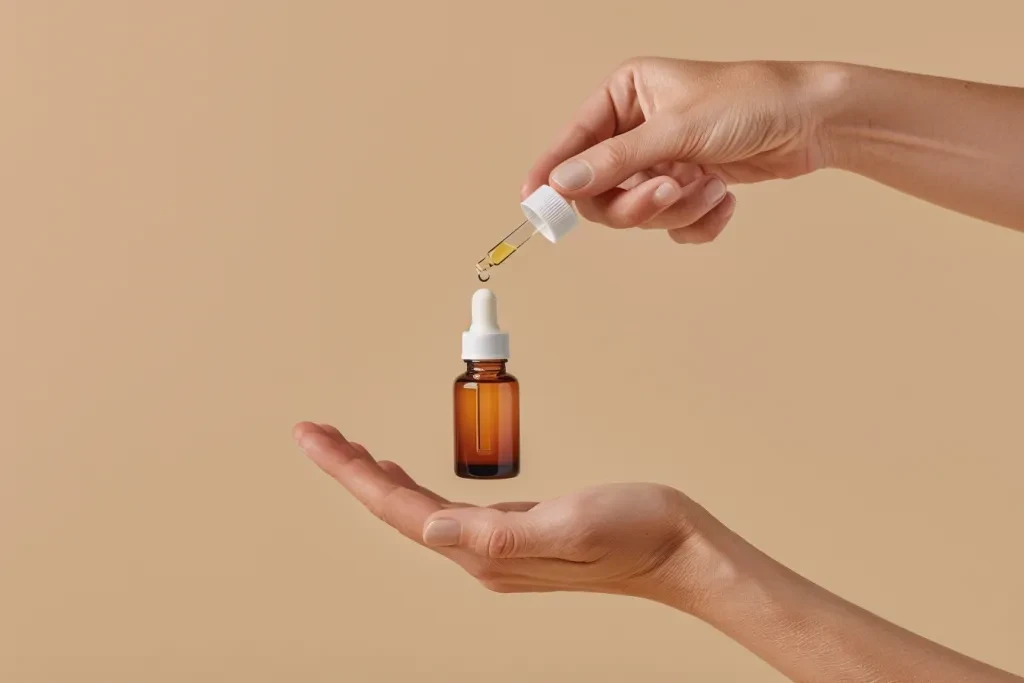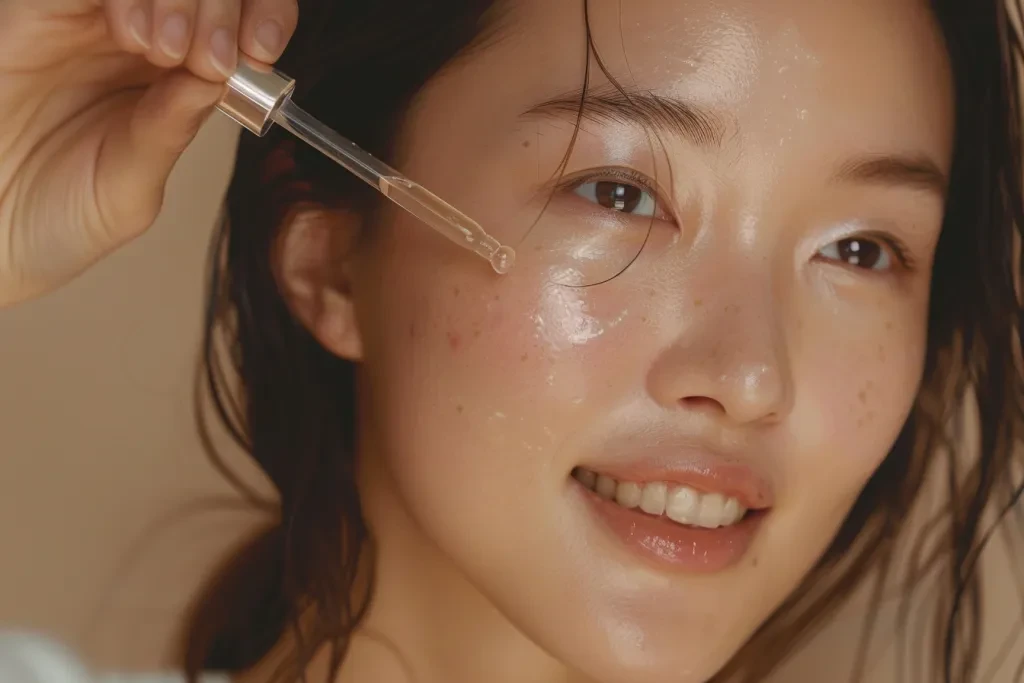Dark spots can be a stubborn barrier to achieving that flawless complexion we all desire. Whether caused by sun exposure, aging, or acne, these blemishes have met their match with dark spot correctors. This comprehensive guide will explore the science behind these products, their benefits, potential side effects, and how to incorporate them into your skincare routine for radiant, even-toned skin.
Table of Contents:
– What is a dark spot corrector?
– Does the dark spot corrector work?
– Benefits of the dark spot corrector
– Side effects of the dark spot corrector
– How to use the dark spot corrector
– Top trendy products that contain dark spot corrector
What is a dark spot corrector?

Dark spot correctors are specialized skincare products designed to reduce the appearance of hyperpigmentation, such as age spots, sun spots, acne scars, and melasma. These products typically contain active ingredients that work by inhibiting the production of melanin, the pigment responsible for skin coloration. Common ingredients include hydroquinone, vitamin C, retinoids, and glycolic acid, each playing a unique role in the fading process. By targeting the melanin production pathway, dark spot correctors can gradually lighten dark spots and contribute to a more even skin tone.
The science behind these products is rooted in dermatological research, focusing on the melanogenesis process. Melanogenesis is the biological mechanism that controls the synthesis of melanin. Effective dark spot correctors contain agents that interfere with this process at various stages, such as tyrosinase inhibitors, which prevent the enzyme tyrosinase from catalyzing the production of melanin. By targeting specific steps in melanogenesis, these products can minimize the formation of new dark spots while lightening existing ones.
Innovation in the field of dark spot correction has led to the development of products that not only inhibit melanin production but also enhance skin renewal. Ingredients like alpha hydroxy acids (AHAs) and beta hydroxy acids (BHAs) promote exfoliation, removing the outer layer of dead skin cells and allowing the new, lighter skin cells to surface. This dual-action approach—reducing melanin production and accelerating cell turnover—makes dark spot correctors a powerful tool in achieving a clearer, more uniform complexion.
Does the dark spot corrector work?

The effectiveness of dark spot correctors can vary based on the active ingredients, the cause of the hyperpigmentation, and the user’s skin type. Clinical studies have shown that products containing hydroquinone, for example, can significantly lighten dark spots within 4-8 weeks of consistent use. However, the success of these treatments also depends on the concentration of the active ingredients and the severity of the hyperpigmentation.
For individuals with mild to moderate dark spots, over-the-counter dark spot correctors can provide noticeable improvements. These products typically contain lower concentrations of active ingredients, making them safer for long-term use without a prescription. For more severe cases, dermatologists may recommend prescription-strength treatments or professional procedures, such as chemical peels or laser therapy, in conjunction with topical correctors.
It’s important to set realistic expectations when using dark spot correctors. While many users experience significant improvements, these products are not a quick fix and require time and consistency to achieve the best results. Additionally, protecting the skin from further sun damage with a high-SPF sunscreen is crucial to prevent new dark spots from forming and existing ones from darkening.
Benefits of the dark spot corrector

The primary benefit of using a dark spot corrector is the significant reduction in the appearance of hyperpigmentation, leading to a more even-toned and radiant complexion. This can enhance one’s self-esteem and reduce the need for heavy makeup to cover imperfections. Additionally, many dark spot correctors are formulated with antioxidants, such as vitamin C and E, which provide added protection against environmental damage and support overall skin health.
Beyond their pigmentation-correcting properties, dark spot correctors often contain ingredients that promote skin hydration and collagen production. This can result in improved skin texture and elasticity, reducing the appearance of fine lines and wrinkles. The exfoliating action of certain ingredients also helps to unclog pores, reducing the likelihood of acne breakouts and contributing to a smoother skin surface.
Another significant benefit is the preventative aspect of dark spot correctors. By inhibiting melanin production, these products can help prevent new dark spots from forming, especially when used in conjunction with a comprehensive sun protection strategy. This proactive approach to skincare can keep the skin looking youthful and vibrant for longer.
Side effects of the dark spot corrector

While dark spot correctors are generally safe for most users, some individuals may experience side effects, particularly with products containing high concentrations of active ingredients. Common side effects include skin irritation, redness, and dryness, especially in those with sensitive skin. In rare cases, excessive use of certain ingredients like hydroquinone can lead to skin discoloration or ochronosis, a condition characterized by bluish-black pigmentation.
To minimize the risk of side effects, it’s crucial to follow the product instructions carefully and start with a lower concentration of active ingredients. Performing a patch test on a small area of skin before full application can help identify any potential allergic reactions. If irritation occurs, discontinuing use and consulting a dermatologist is advisable.
It’s also important to note that some dark spot correctors can increase the skin’s sensitivity to the sun, making it more susceptible to sunburn and further hyperpigmentation. Using a broad-spectrum sunscreen and wearing protective clothing when outdoors is essential to protect the skin and enhance the effectiveness of dark spot correctors.
How to use the dark spot corrector

For optimal results, incorporating a dark spot corrector into your skincare routine should be done with care and consistency. Begin by cleansing the skin thoroughly to remove impurities and excess oil. Apply the dark spot corrector to dry skin, focusing on areas with hyperpigmentation. Since these products can be potent, starting with a pea-sized amount and gradually increasing as needed is advisable.
After applying the dark spot corrector, wait a few minutes to allow it to absorb fully before proceeding with your regular skincare routine. Applying a moisturizer can help mitigate any potential dryness or irritation caused by the active ingredients. Finally, applying a broad-spectrum sunscreen with at least SPF 30 is crucial, as many dark spot correctors can make the skin more sensitive to UV radiation.
Consistency is key when using dark spot correctors. Apply the product once or twice daily, as recommended, and be patient. It may take several weeks to see noticeable improvements. Regularly exfoliating the skin can also enhance the effectiveness of dark spot correctors by removing dead skin cells and improving product penetration.
Top trendy products that contain dark spot corrector

The beauty market is continually evolving, with new and innovative dark spot correctors emerging regularly. While specific brands are not mentioned here, some of the most popular and effective products contain a combination of the following ingredients: vitamin C, for its antioxidant and skin-brightening properties; retinoids, for accelerating cell turnover and improving skin texture; and niacinamide, for its ability to reduce inflammation and even out skin tone.
Products that combine these ingredients with natural extracts, such as licorice root or mulberry, are also trending. These natural alternatives offer gentle yet effective pigmentation correction, making them suitable for those with sensitive skin. Additionally, formulations that include hyaluronic acid are popular for their added hydration benefits, ensuring the skin remains supple and moisturized while undergoing treatment.
When selecting a dark spot corrector, looking for products with a stable formulation and optimal concentration of active ingredients is important. This ensures maximum efficacy while minimizing the risk of irritation. As the beauty industry continues to innovate, staying informed about the latest developments in dark spot correction can help you choose the best product for your skin type and concerns.
Conclusion:
Dark spot correctors offer a promising solution for those looking to reduce hyperpigmentation and achieve a more even-toned complexion. By understanding how these products work, their benefits, potential side effects, and proper usage, you can effectively incorporate them into your skincare routine. Remember, consistency and sun protection are key to maximizing the benefits of dark spot correctors. With the right product and approach, you can unveil radiant, flawless skin that glows with health and vitality.




